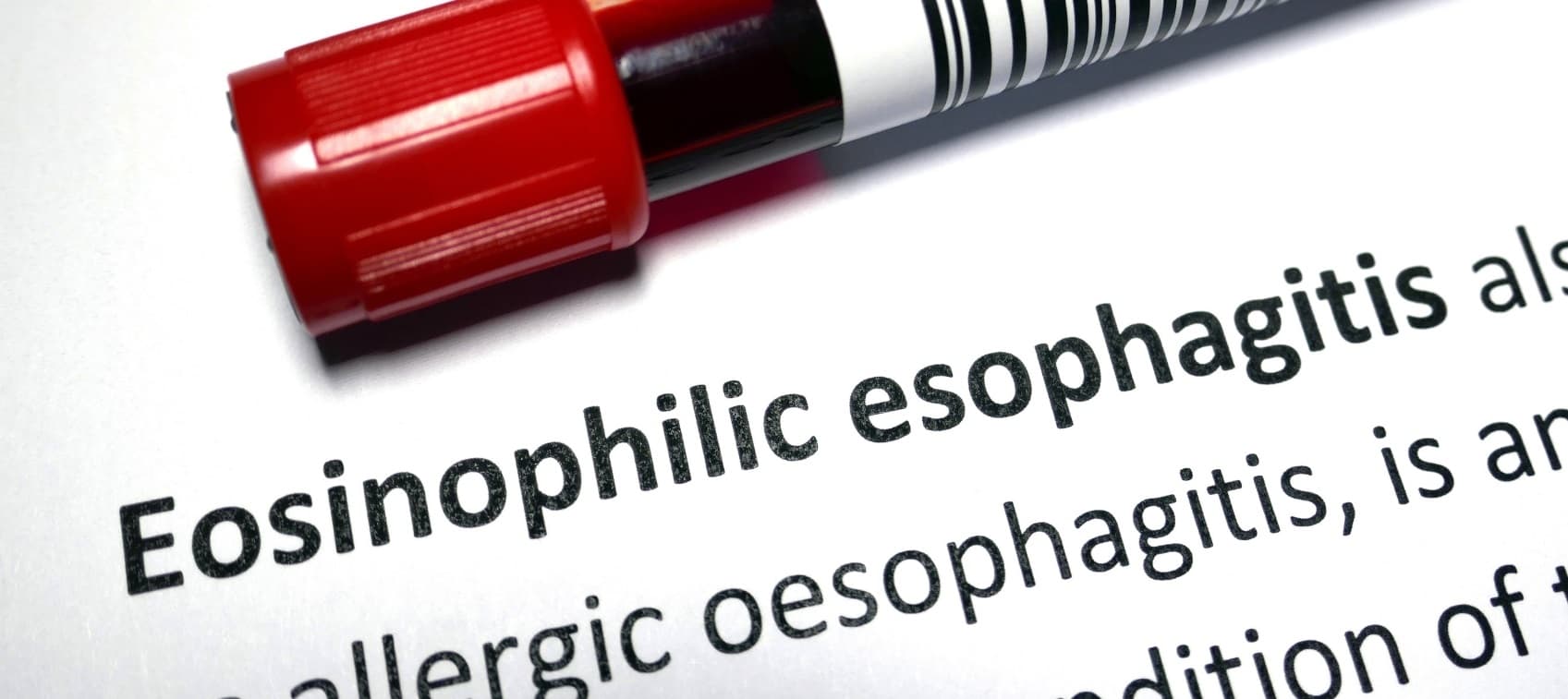
Eosinophilic Esophagitis (EOE) may be difficult to pronounce, but it’s a condition you should become familiar with as its prevalence is increasing.
While I was completing my degree in naturopathic medicine, I didn’t see a single case of EOE in the clinic, nor did we learn about it in our gastroenterology or immunology classes. I saw my first patient with EOE in 2015. That same year I saw three more cases and have since treated about a dozen patients with EOE.
As you can imagine, my interest in this condition grew rather quickly and I dug into the literature to determine its underlying causes and which natural medicine treatments are helpful.
What is Eosinophilic Esophagitis?
Eosinophils are white blood cells that are associated with allergies, parasites, and other conditions. With EOE, eosinophils begin to accumulate in the esophagus, causing structural changes to the tissue, and resulting in inflammation and a narrowing or hardening of the esophagus.
EOE affects men more often than women and can begin as early as infancy. It is also common for people with EOE to have other associated allergic-type conditions, such as food allergies or sensitivities, asthma, eczema, or environmental allergies.
What Are the Symptoms of Eosinophilic Esophagitis?
When eosinophils gather in the esophagus causing structural changes, symptoms can begin to present such as:
- Difficulty or painful swallowing
- Food getting stuck in your esophagus
- Nausea and/or vomiting
- GERD-like symptoms (e.g. heartburn or pressure in the chest)
- Upper abdominal pain
- Finicky eating and/or failure to thrive (in infants and children)
- Malnutrition
The symptoms of EOE can be mild or intense, and persistent or intermittent. For some folks, this illness can be incredibly difficult to manage with severe symptoms. I’ve seen children develop nausea and lose their appetite to the point that they drop weight and develop malnutrition.
Diagnosing Eosinophilic Esophagitis
If you have difficulty swallowing, heartburn, and nausea, you may be wondering if you have EOE. Yet, this condition cannot be diagnosed with symptoms alone.
You will also need an endoscopy to visually look at changes in the esophagus, and/or biopsies to look for the presence of eosinophils. If upon examination more than 15 eosinophils are found on high power field microscopy and you are symptomatic, a diagnosis of EOE may be given.
Sometimes eosinophils are elevated on a complete blood count (CBC), which is a routine blood test your doctor may run. Yet, an elevation is not enough to diagnosis EOE as other causes can drive up eosinophils like allergies or parasitic infections.
Treating Eosinophilic Esophagitis—Begin with Your Diet
First and foremost, if you develop EOE you need to look closely at the foods you are eating, as you might have an allergy or intolerance that you’re not aware of. An elimination diet is usually recommended to see if eliminating certain food groups reduces symptoms. The common culprits include:
- Gluten and wheat products
- Dairy products
- Peanuts/tree nuts
- Seafood
- Soy
Some doctors like to run IgE, IgG, and IgA food allergy panels on patients to determine if there are hidden foods that might be eliciting an immune response. These tests are usually not covered by insurance and can be unreliable for many reasons. I only run these tests when an elimination diet doesn’t improve symptoms.
Elemental diets are another food-based treatment option. During an elemental diet, specific easily digestible amino acid formulas are given that do not elicit an immune response. The only issue I commonly see with elemental diets is the poor taste of the formulas, which can lead to low compliance.
Supportive Therapies Are Important
Once suspected food allergies or food intolerances are addressed, some doctors recommend pharmacological therapy to reduce the allergic response and prevent eosinophils from migrating into the esophageal tissue.
These therapies may include:
- Corticosteroids
- Acid reducing medications (PPI’s, H2 Blockers)
- Antihistamines (cromolyn sodium)
In my practice, I’ve also found that natural antihistamines like quercetin are helpful for symptom management and that supporting the gut with probiotics, immunoglobulins like IgG or colostrum, and treating any underlying bacterial or yeast overgrowths can help reduce symptoms.
Finally, I’ve Found Mold Is a Common Trigger
As a naturopathic doctor, I’m always asking “why.” Why do EOE symptoms develop, and what might be some causes for eosinophils to migrate into the esophagus? Since I work with a lot of patients with complex chronic disease, I found that in the dozen EOE patients I’ve treated that the majority of them had past or current exposure to mold.
The reason I mention this is because if you are living in a moldy home, or had significant exposure to mold in the recent past and have been diagnosed with EOE, you want to consider whether an underlying mold and mycotoxin illness might be driving the immune system dysfunction. For some patients, once the source of the mold has been identified and removed, the EOE symptoms improve.


